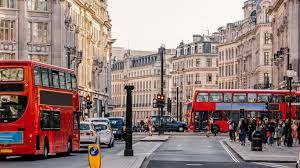Traveling between Heathrow and Gatwick, two of the busiest travel from london heathrow to gatwick airport airports in the world, is a common journey for many travelers in the UK. Whether you’re making a connecting flight, traveling for business, or simply hopping between terminals, understanding the route, transport options, and other key details can make your journey more efficient and less stressful. Let’s explore the various ways to travel between Heathrow and Gatwick, along with some tips to make the trip smoother.
Overview of Heathrow and Gatwick
Heathrow Airport, located to the west of London, is the largest airport in the UK and one of the busiest worldwide. It serves over 80 million passengers annually, offering flights to destinations across the globe. Gatwick, situated to the south of London, is the second-busiest airport in the UK and also hosts a wide range of international and domestic flights.
Both airports are vital gateways for travelers coming to or transiting through London, and due to their geographical spread, traveling between them requires careful planning.
Distance and Travel Time
The straight-line distance between Heathrow and Gatwick is about 38 miles (61 kilometers). However, in practice, the actual journey can take considerably longer, depending on traffic, transport options, and time of day. The travel time ranges from 45 minutes to 90 minutes or more.
One of the challenges is that Heathrow and Gatwick are on opposite sides of London, with no direct train service connecting them. Therefore, travelers often have to consider road-based options or a combination of trains and buses.
Transport Options
1. National Express Coach
National Express is one of the most convenient and cost-effective ways to travel between Heathrow and Gatwick. These coaches run directly between the two airports, without any stops in central London, providing a hassle-free journey.
- Journey Time: Approximately 75–90 minutes.
- Cost: Prices vary but generally start at around £20 for a one-way ticket.
- Frequency: Coaches run every 30–60 minutes throughout the day.
- Pros: Direct route, no transfers needed.
- Cons: Vulnerable to road traffic, especially during peak hours.
2. Private Transfers or Taxis
For those who prefer more comfort or flexibility, booking a private car service or taking a taxi can be a good option. Taxis are available at both airports, and several companies offer private transfer services.
- Journey Time: Between 45 minutes to 1.5 hours, depending on traffic.
- Cost: Taxis can be expensive, with fares typically ranging from £60–£100.
- Pros: Door-to-door service, no waiting for schedules.
- Cons: High cost and potential for long delays due to road traffic.
3. Train via Central London
Although there is no direct train link between Heathrow and Gatwick, travelers can opt to take trains via central London. The two main routes are:
- Heathrow Express to London Paddington, then take the London Underground or a taxi to Victoria Station, where you can catch the Gatwick Express to Gatwick Airport.
- Alternatively, take the Elizabeth Line from Heathrow to Farringdon and switch to Thameslink trains to Gatwick.
- Journey Time: Approximately 90–120 minutes.
- Cost: Combined train tickets cost between £25–£50.
- Pros: Avoids road traffic and is more predictable in terms of time.
- Cons: Requires multiple transfers, handling luggage on and off trains.
4. Car Hire
Some travelers may opt to hire a car for the journey between the two airports, especially if they have a longer layover and want to explore the surrounding areas. Car rental services are available at both Heathrow and Gatwick.
- Journey Time: 1–2 hours, depending on traffic.
- Cost: Car rental prices vary significantly based on the type of vehicle, rental duration, and company, but typically start at £50 per day.
- Pros: Flexibility, ability to explore nearby areas.
- Cons: Navigating London traffic can be stressful, and parking at airports can add extra costs.
5. Heathrow Connect Shuttle Services
There are some shuttle services that cater specifically to airport-to-airport transfers. They operate mini-vans or buses that take passengers directly between Heathrow and Gatwick with minimal stops.
- Journey Time: 60–90 minutes.
- Cost: £25–£35.
- Pros: Direct service, fewer passengers.
- Cons: Availability may be more limited compared to National Express.
Considerations for Traveling Between Heathrow and Gatwick
1. Allow Extra Time for Your Journey
When traveling between Heathrow and Gatwick, it’s essential to allow plenty of extra time. Consider potential delays, such as road traffic or train cancellations, especially if you have a connecting flight. Aim to allow at least three hours between flights for a seamless transfer, though more time is always better.
2. Luggage Handling
If you are transferring between flights, make sure to check your airline’s policy regarding checked luggage. Some airlines may transfer luggage automatically between Heathrow and Gatwick, while in other cases, you may need to collect your bags and transfer them yourself.
3. Flight Connections
Check your flight schedule carefully. Some airlines offer “interline” agreements that include transfers between Heathrow and Gatwick in their bookings, meaning they account for travel time between the two airports when planning layovers. Others may not offer this, so you will need to organize the transfer yourself.
Final Thoughts
Navigating between Heathrow and Gatwick requires a bit of planning, but with multiple transport options available, it’s not as daunting as it might seem. Whether you opt for a coach, private transfer, or train, consider the time of day, potential delays, and your comfort preferences when choosing how to make the journey. By preparing ahead, you can ensure a smooth and efficient transfer between these two major London airports.




